All posts by Bridget Cunningham

Finding the Ideal Thickness for the Insulation of a Pipeline
Pipelines need to be properly insulated in order to transport products like petroleum and natural gas across long distances. Use COMSOL® to find the ideal thickness for a pipeline insulation.
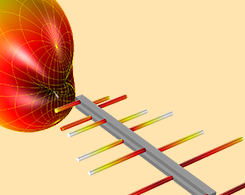
Designing Accurate EMC/EMI Testing Equipment with RF Modeling
EMI/EMC testing is used to ensure that various products, processes, and systems meet standard compliance requirements. RF modeling can be used to design equipment for accurate analyses.

Streamlining the Design of Frequency-Selective Surfaces
If you want to improve the frequency response of a frequency-selective surface, you have many options for methods. 1 method streamlines what can be a complex process: simulation applications.

Simulating Helmholtz Coils in COMSOL Multiphysics®
Electromagnetics simulation simplifies the process of constructing a Helmholtz coil and calculating its magnetic field to ensure the fields are uniform, which is important for a variety of uses.
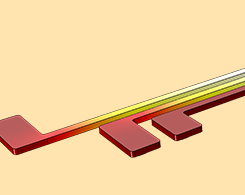
Optimizing the Design of Thermal Actuators for Use in Microsatellites
Microsatellites are replacing traditional large satellites in aerospace missions for gathering scientific data. Using simulation, we can optimize an important component of these devices.

Analyzing a Probe Tube Microphone Design with Acoustics Simulation
Probe tube microphones are an important component in hearing aids. Learn about how you can use acoustics modeling to analyze the design and predict the performance of these devices.
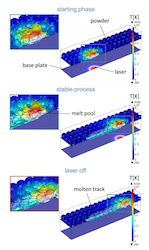
Analyzing Laser Beam-Matter Interaction in Selective Laser Melting
Selective laser melting is a common and important process in many types of manufacturing. You can model the interaction between the laser beam and matter for a closer look at this process.
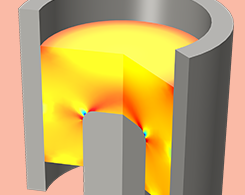
Simulating Powder Compaction with Porous Plasticity Models
Powder compaction is an important and popular technique in many manufacturing industries. You can use porous plasticity models to analyze and improve the powder compaction process.
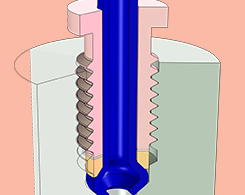
Studying Stress in Threaded Pipe Fitting Designs from CAD Assemblies
Threaded pipes are durable, reliable, and resistant to damage from heat and stress. You can combine a CAD assembly of a threaded pipe with a COMSOL Multiphysics® analysis to study its design.
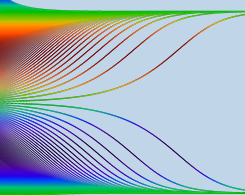
Benchmark Model Shows Reliable Results for Inertial Focusing Analysis
Inertial focusing involves the migration of particles through a channel. This benchmark model analyzes particle behavior in an inertial focusing process with validated, reliable results.

Studying the Artificial Ground Freezing Method with Simulation
Artificial ground freezing (AGF) is a valuable process in the construction industry. Researchers from China modeled groundwater flow to optimize an artificial ground freezing (AGF) process.
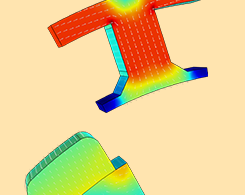
Capturing Eddy Current Losses in a Permanent Magnet Motor Design
Permanent magnet (PM) motors are becoming more prevalent in transportation due to their energy efficiency. You can study Eddy current losses in a PM motor design with the AC/DC Module.

Modeling a Transient Contact Problem with Stick-Slip Friction Transition
Stick-slip friction transition is a phenomenon relevant to many transient mechanical contact problems. You can use structural analysis to evaluate these effects.

Analyzing Heat and Mass Transfer During Cake Baking with Simulation
As you bake a cake, there are many complex heat and mass transport processes taking place behind the oven door. Take a closer look at the art and science involved in the cake baking process…
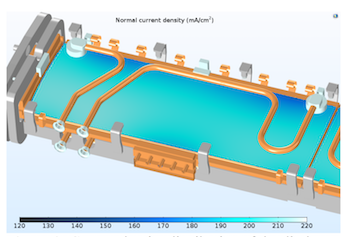
A Multilevel Approach to Modeling Planar Discharge in CO2 Lasers
Check out the multilevel approach to plasma modeling used by a researcher in the laser industry, who used the flexibility and functionality of COMSOL Multiphysics® to optimize a gas laser design.

Analyzing the Design of a New Generation of Midinfrared Fiber Optics
Semiconductor simulation software is a promising method for advancing the design of midinfrared fiber optics because it can be used to measure propagation losses in the optical fibers.

Studying the Influence of Concrete Phenomena on Sensor Performance
Some concrete structures use embedded sensors to monitor their stability, but the concrete itself can interfere with the sensors’ performance. Researchers used simulation to address this issue.

Using Low-Reflecting Boundary Conditions to Model Wave Propagation
Modeling wave propagation can be challenging. You need to balance the size of the computational domain with reflection at the surface boundaries. Low-reflecting boundary conditions can help.
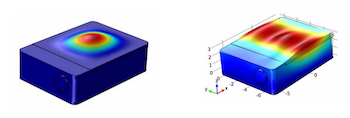
Designing a Sensor Package for a High-G Accelerometer via Simulation
To design a piezoresistive sensor package for a high-G accelerometer, researchers turned to multiphysics analysis. They then verified the simulation results with experimental data.

Happy Birthday, Wilhelm Röntgen
Wilhelm Röntgen, a German physicist, is best known for discovering X-rays. Fun fact: The first X-ray ever taken is of the hand of his wife, Anna Bertha.

Understand Phenomena in the Viscous Catenary Problem via Simulation
The viscous catenary problem is theoretically and experimentally significant in many industries due to the complex phenomena it entails. Simulation can help us understand this problem.
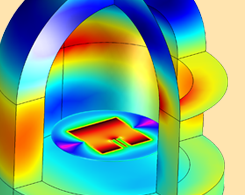
Assessing a Radome Design’s Ability to Improve Antenna Directivity
Bad weather and harsh environmental conditions can negatively effect antenna directivity, and in turn, wireless communication. Using simulation, you can design radomes that improve this quality.

Designing CSRR-Based Sensors to Monitor Chronic Kidney Disease
Chronic kidney disease can be effectively diagnosed, prevented, and treated through the use of noninvasive CSRR-based sensors. Researchers optimized the design of these sensors with simulation.
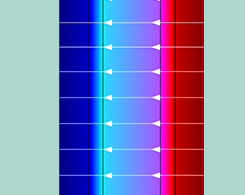
Analyzing Reverse Electrodialysis Units with Multiphysics Modeling
Pass the salt…for a clean energy solution. Salinity gradient power relies on osmosis between fresh- and saltwater to generate power, and simulation can help analyze and optimize such systems.
